Ikebana is an art and technique that pursues aesthetic effects by arranging flowers, plants, and other plants in vases. It is a part of Japan’s traditional culture, and places emphasis on expressing the aesthetic sense of admiring nature and the sense of the seasons.
When you visit Japan, you are likely to see Ikebana at Japanese-style restaurants and accommodations.It may look like a piece of work simply decorated with flowers, but it has a very deep meaning that embodies the spirit of the Japanese people.
This article introduces the characteristics of Ikebana. If you read this, you will be able to understand more about Ikebana, so if you are interested, please read until the end.
Characteristics of Ikebana
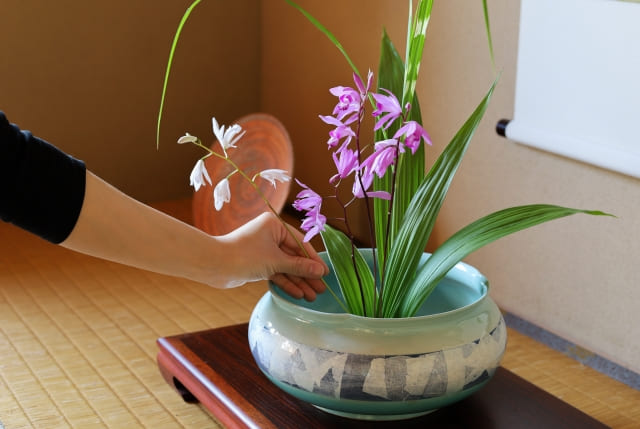
Ikebana (生花) is the art of arranging flowers, plants, and other plants beautifully in containers called vases.It is also called “Kado” (華道) because it is an art of flowers.
Ikebana has the following five characteristics.
Harmony with nature
Ikebana is based on the aesthetics of expressing nature. It is important to arrange flowers, leaves, branches, etc. according to their natural shapes and postures to bring out their beauty.
Utilization of space
Ikebana is designed not only by arranging flowers and plants, but also by utilizing the surrounding space. Create a beautiful space by considering the background, floor, and lighting.
Simplicity and Depth
Ikebana pursues a simple yet profound beauty. By arranging flowers and plants in a simple manner, we bring out the beauty of each material to its fullest, while also expressing a deep meaning.
Expression of seasonal feeling
In Ikebana, it is important to express the sense of the seasons. Flowers and plants are selected and arranged according to the season. There are Ikebana suitable for each season: spring, summer, autumn, and winter.
Manners and Traditions
Ikebana has strict manners and traditions. For example, there are etiquettes for how to handle and arrange vases and flower materials (flowers, plants, etc.), and even for those who view flowers. By understanding these manners and traditions, you will be able to gain a deeper understanding and appreciation of Ikebana.
Difference between Ikebana and Flower arrangement
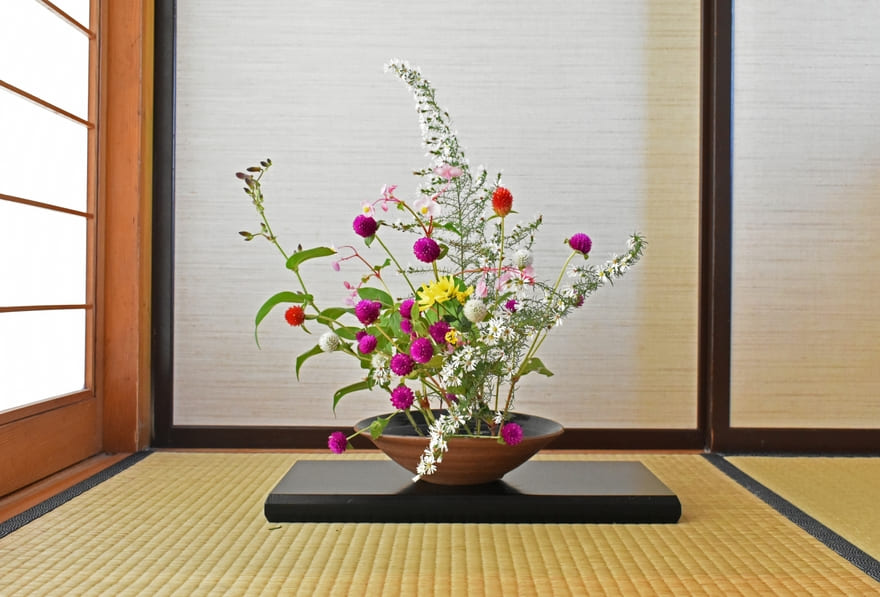
Ikebana is the art and technique of arranging natural materials such as flowers, branches, leaves, plants, etc. according to unique rules, while making the most of their natural shapes and colors, and using tools such as vases and basins to maintain balance. .
We aim to value the natural beauty and harmony of flower materials, and pursue a harmonious beauty in the space.
Flower arrangement, on the other hand, is the art and technique of selecting flowers of various types and shapes and creating beautiful shapes and colors by making full use of techniques such as pruning, mixing colors, and shaping the flower materials.
Emphasis is placed on expressing splendor by using many flowers and plants, and the space is filled with flowers and plants so that they can be enjoyed from all directions.
Simply put, Ikebana is an art form that takes advantage of nature as it is and emphasizes harmony with the space, while flower arrangement is a technique and art that expresses gorgeousness by modifying the shape and color of flower materials.
Another difference is that while Ikebana has a Japanese-style feel, with the flower materials and vases determined by the season and climate, flower arrangement often has a Western-style feel.
There is no saying that one is better or worse, but it can be said that Ikebana is rooted in the Japanese spirit of valuing harmony with those around you.
What is Ikebana for Japanese people?
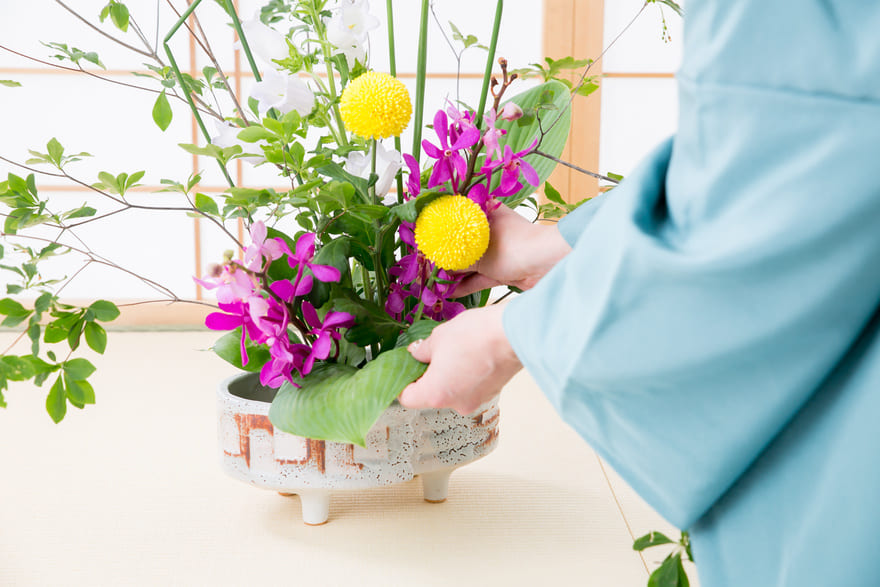
For Japanese people, Ikebana is a traditional art that has been loved since ancient times and is deeply rooted in Japanese culture. The emphasis is on feeling and expressing the beauty of nature and the sense of the seasons through flower arranging. It is also deeply involved in traditional Japanese events and customs, such as the tea ceremony, flower arranging, and New Year’s decorations, and has become a familiar presence in daily life and culture.
For Japanese people, Ikebana is not just about displaying flowers; it is an art that expresses a sense of beauty, sensitivity, and connection with life and nature, and is a symbol of Japanese culture that values harmony between people and nature. It can be said that through Ikebana, Japanese people have cultivated gratitude and respect for nature, as well as a spirit of pursuit of beauty.
In modern times, Ikebana is mainly used for the following purposes.
Get healing
Ikebana is a soothing experience for busy Japanese people. Some Japanese people decorate their offices and homes with flower arrangements.
There are not many flowers and plants used in Ikebana.It has a simple and clean impression, which makes us feel calm when we look at it.
Entertain customers
Japanese people use Ikebana as a form of hospitality for their guests. Japanese-style high-end restaurants and long-established hot spring inns are almost decorated with Ikebana. By Ikebana, people encapsulate hospitality with the desire to bring customers “a moment of peace” or “the feeling of being able to relax even for just a moment in this place”.
Acquire good manners
Ikebana is not just the art of arranging flowers. When arranging flowers, there are the following etiquette rules:
- Calm yourself down before arranging.
- Clean the area where you will be arranging flowers and the tools used when arranging them.
- When arranging, cherish the life of flowers and plants.
It is said that learning these manners will have a positive effect on your life.Some Japanese people choose to learn Ikebana when they want to learn etiquette while touching beautiful flowers.
Points to remember when enjoying Ikebana
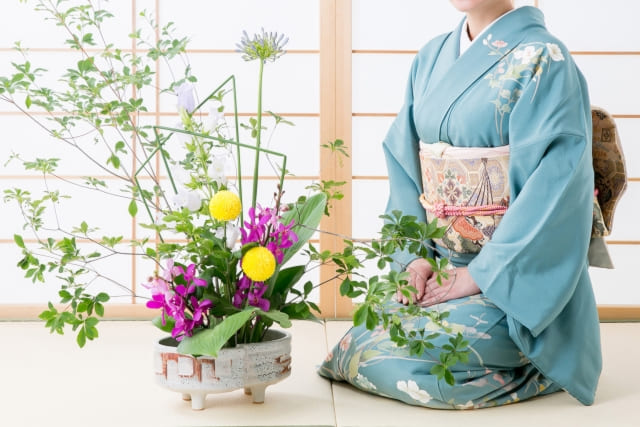
When enjoying Ikebana, it is important to pay attention to the following points. You’ll probably get more out than if you were just looking at it.
Types of flower materials and arrangement methods
The impression and expression of Ikebana can vary greatly depending on the type of flower materials and how they are arranged. By observing the colors, shapes, and textures of the flowers and how they are arranged, you will be able to understand the intention and theme of the Ikebana.
The shape and color of the vase
The vases used for Ikebana also have different impressions depending on their design, material, and color. The vase is an important element that creates a highlight for the flower material and creates the overall beauty, so pay attention to the shape, material, and color of the vase.
Utilization of space and lighting
Ikebana are not only appreciated on their own, but are also arranged to look more beautiful in conjunction with the surrounding space and lighting. Pay attention to the atmosphere of the place where the Ikebana is placed, the brightness and color of the lighting, etc., as these factors greatly affect the impression of the Ikebana.
Three major schools of Ikebana
Ikebana has developed over 500 years since it was established during the Muromachi period (1336-1573). During that time, many different schools were born, and it is said that there are now over 400 schools.
A school is a group of people with distinctive teachings, techniques, and styles of Ikebana. Each school has a different historical background, founder, teaching methods, and techniques, and each school uses its own unique approach to Ikebana. The way of Ikebana is presented and its composition differs depending on the school, which reveals differences in aesthetic sense and sensibilities.
Here, we will introduce three representative schools in Japan.
Ikenobō (池坊)
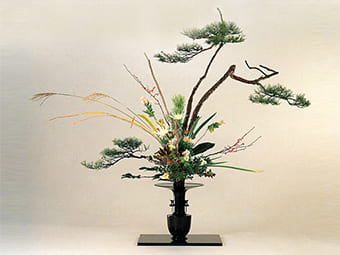
Ikenobō is the oldest school of Ikebana that was born approximately 500 years ago.
Ikenobō’s feature is that it makes use of nature as it is. It does not excessively shave or cut the flower material, but rather make use of its natural shape. Therefore, Ikenobō makes use of even withered flowers and plants and finds beauty in them.
Ikenobō’s Ikebana incorporates three styles: “Rikka”, “Shōka”, and “Jiyūka”, which will be described later.
Ikenobō is very influential in the modern Ikebana world and is loved by many people. For this reason, it is the school with the most students of all the Ikebana schools.
Ohara school (小原流)
Ohara school is a relatively new school of Ikebana that was born in the Meiji period (1868-1912).
Ohara school is characterized by its unique style of “Moribana” (described later), and the introduction of Western flowers (flowers imported from Europe), which were previously not accepted in the traditional Ikebana world, created a style of Ikebana that is not bound by tradition.
Ohara school’s Moribana was suitable for the Westernized living spaces of Japan and was widely accepted by the public. Nowadays, it is considered one of the three major schools of Ikebana.
Sōgetsu school (草月流)
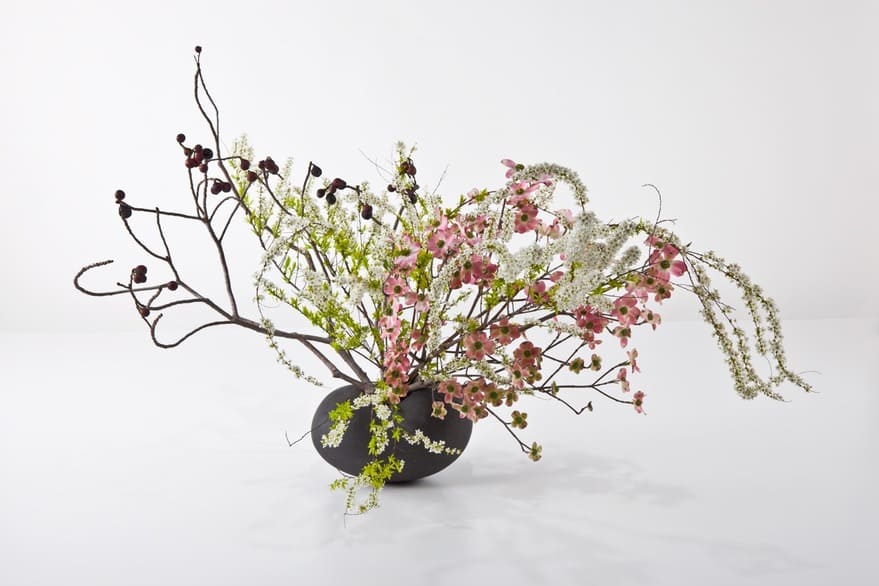
Sōgetsu school is a new school that was born in 1927.
It is said that the founder, Sōfū Teshigahara (勅使河原 蒼風), created the Sōgetsu school after learning about traditional Ikebana, which he had doubts about being too formal.
The Sōgetsu school is characterized by being able to be arranged anytime, anywhere, by anyone, and using any material. It values flower arranging freely and in an individual way, by allowing the arranger’s to think freely without being bound by stereotypes or formality.
Ikebana styles
There are several styles of Ikebana. Typical varieties include Rikka, Shōka, Moribana, and Jiyūka. The characteristics of each are explained below.
Rikka style (立花)
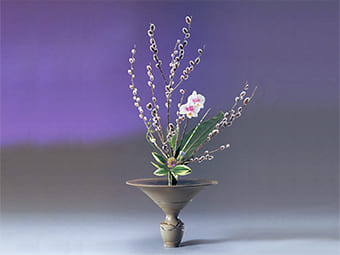
Rikka is a style with the oldest history, established during the Muromachi period (1336-1573). It has been adopted at Ikenobō. Generally, a tree called “Shin” (真) is placed in the center, and seasonal flowers are placed at its feet. “Shin” is a symbol of mountains and flowers are symbols of water, expressing the beauty of nature’s landscape. At the time when Rikka was established, it was arranged at banquets and other public places to entertain guests.
Shōka style (生花)
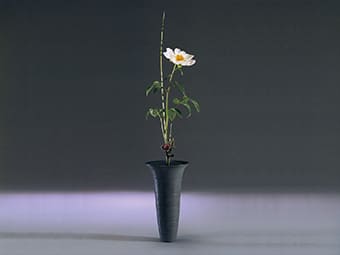
Shōka is a style that was established in the mid-Edo period (around 1710 to 1790). This is also adopted at Ikenobō. Compared to Rikka, it is characterized by fewer plants being used and smaller size. While Rikka focuses on expressing the beauty of natural scenery, Shōka focuses on expressing the life that dwells in plants. At the time when Shōka was established, it was be arranged in a Japanese-style room or in a private space.
Moribana style (盛花)
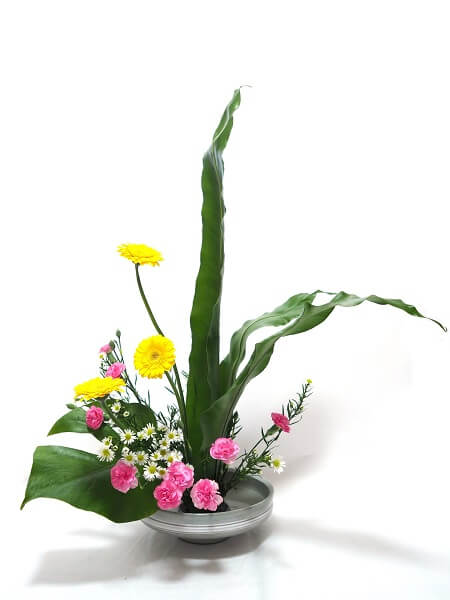
Moribana is a style that was established at the same time that the Ohara school was established during the Meiji period (1868-1912). For this reason, it is mainly adopted by the Ohara school. A flat container and a tool called a Kenzan (剣山) to hold the plant are used. Flowers and plants will be filled up on those tools. Moribana is said to be a style devised by the first head of the Ohara school to incorporate Western flowers into Ikebana.
Moribana is often displayed at ceremonial occasions.
Jiyūka style (自由花)
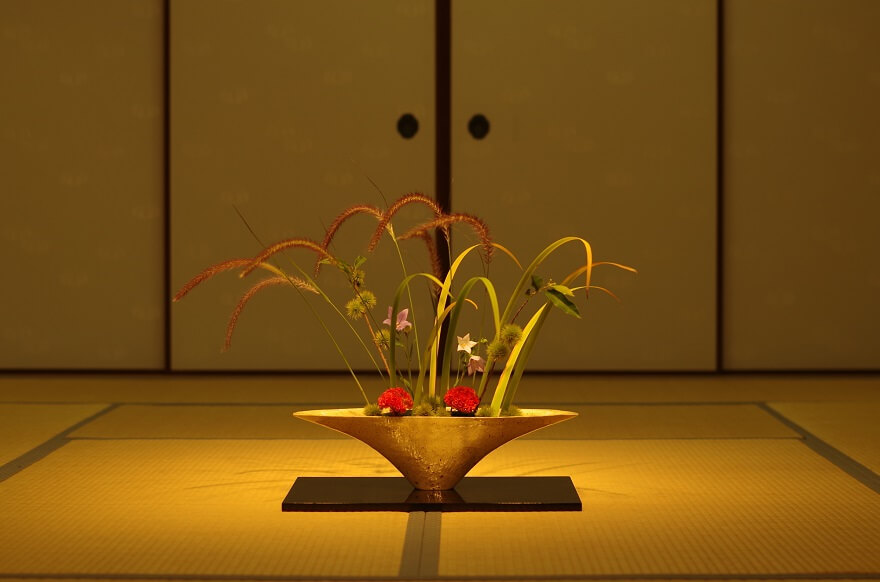
Jiyūka is a style that was established in Ikenobō following the birth of Moribana.Characteristic of the Jiyūka style is the free arrangement of flowers and plants while still paying attention to their shape and nature.It has developed as a style of decorating flowers that is appropriate for the space and situation.
Summary
In this article, we have explained the characteristics of Japanese Ikebana. We hope that the information introduced here will be of some use to you when enjoying Ikebana in Japan.

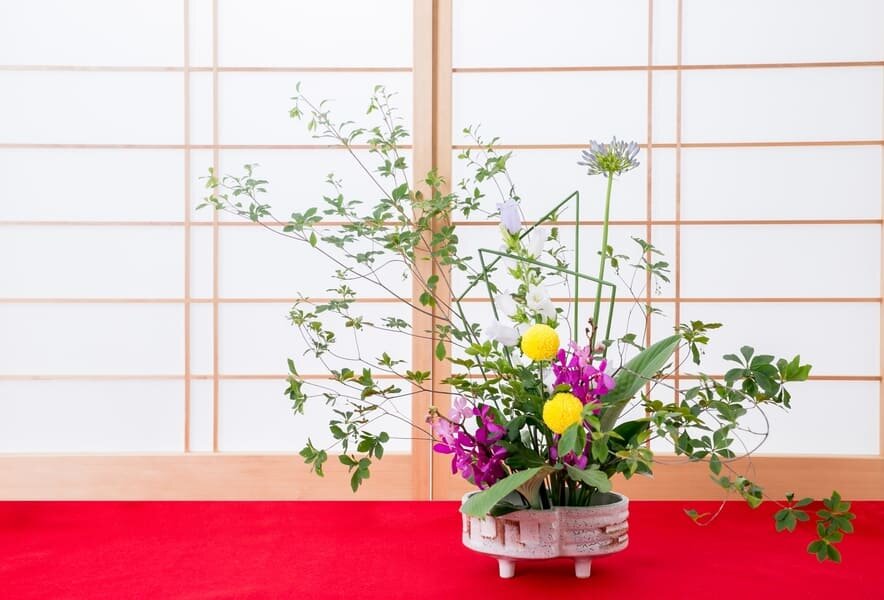
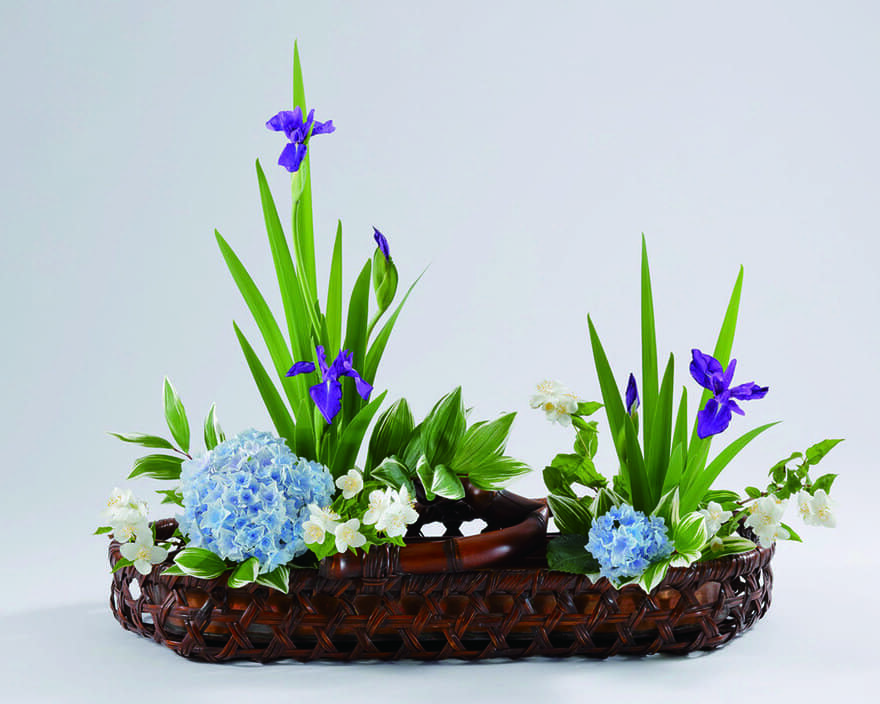
Comment